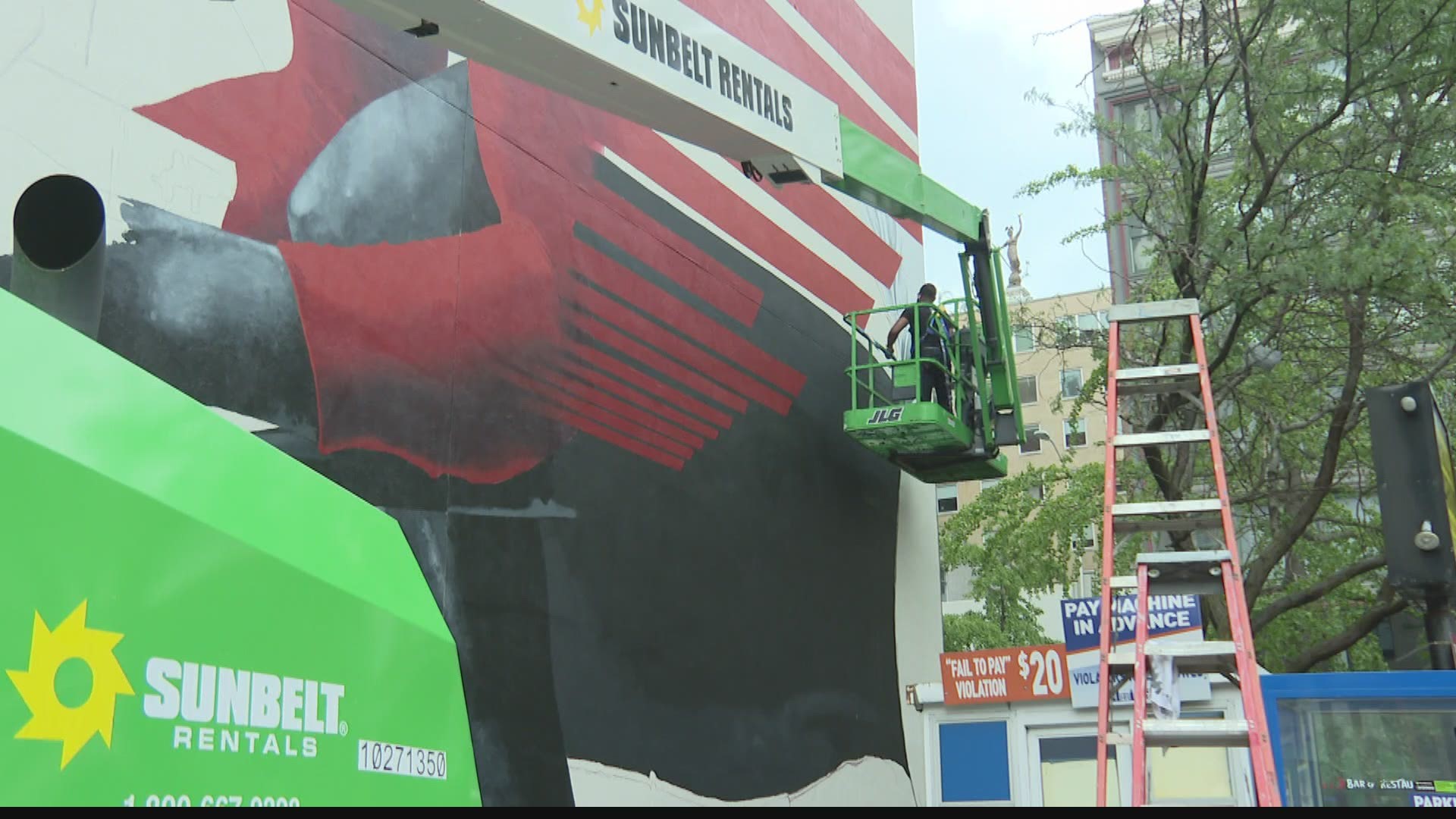INDIANAPOLIS — The downtown mural depicting internationally-recognized cyclist and racial justice advocate Marshall “Major” Taylor is nearly 75 percent complete.
Work started seven weeks ago on the east-facing exterior of the Barnes & Thornburg building at 11 S. Meridian St.
It’s the inaugural mural for the City of Indianapolis’ “Bicentennial Legends” series that was announced in September. It works to highlight Hoosiers who embody history, civic pride, innovation and legacy.
In 1899, Taylor, who was born and raised in Indianapolis, became the first African-American world champion professional cyclist. He was the U.S. sprint champion in 1899 and 1900, set numerous world records and became a role model for other athletes facing racial discrimination.
Earlier this year, the Arts Council of Indianapolis announced Chicago-based artist Shawn Michael Warren would create the mural, one of 54 artists from around the country who applied. He is being assisted by Indy-based painter Boxx the Artist.
Warren said he came across the project online and applied. At the time, he wasn’t too familiar with Taylor’s legacy and had to do some research.
“I was intrigued by his story and from that, I was able to create different concepts and different ideas that would really showcase who he was and to display him in a very grand way,” Warren said.
“He has such a grand story and it was a story that wasn’t really celebrated or acknowledged because of the color of his skin during that time. I wanted to focus not only on his life as an athlete but who he was in general.”
Warren designed the mural in multiple portraits: one of Taylor in his youth, another in his prime and a third re-entering the sport after a two-year hiatus.
“You have one that is young and hopeful and you have another that is more stoic and a little more hardened because of what he faced in the sport and just, in general, being a black man living in the late 1800s, early 1900s and one of him being in the sport. Of course, you want to acknowledge that he was this global athlete. He was a world-renowned cyclist,” Warren said.
Warren said it’s important to learn about the city’s history, even the uncomfortable side.
“For someone that experienced the highest of highs in his prime and for someone that was a globally-recognized name, it’s sad that these stories are not really heard of all that much. I’ve had quite a few people come by asking 'who is that?' and having to explain his story. They don’t even know who he is or the fact that he is from Indianapolis,” Warren said.


In a way, Warren has become an artist and historian by sharing stories through his work.
“It’s important to learn about people such as Major Taylor and many other figures that have contributed to society in ways that were really profound, but they went under the radar. They went unsung,” Warren said.
An outdoor dedication ceremony for the mural is planned for this summer. Indiana Humanities and the Arts Council will also commission an Indiana poet to reflect on Taylor’s legacy.
Additional Bicentennial Legends murals will be installed through 2023. People can nominate Hoosiers who have made significant contribution to Indianapolis’ history and culture and who amplify the four guiding principles set by the Bicentennial Commission: History, civic pride, innovation and legacy.
What other people are reading:
- Charges filed against suspect in killing of officer at federal building in Terre Haute
- Coroner finds woman died after tearing artery on Holiday World roller coaster
- Delta variant: Pfizer to seek US permission for COVID vaccine booster
- ‘We are in crisis’ | Anderson shelter overrun after 2 'hoarding' cases in less than 24 hours

